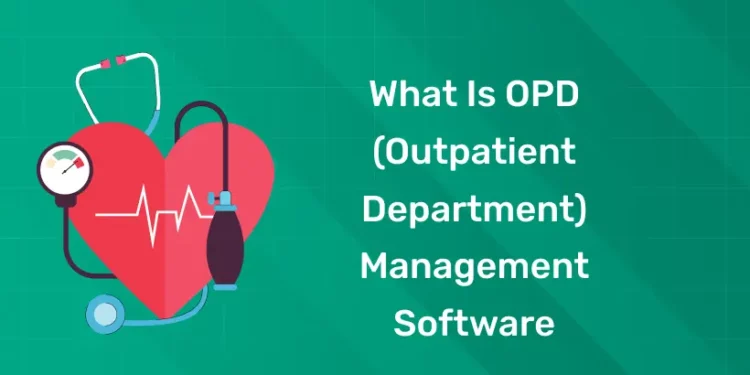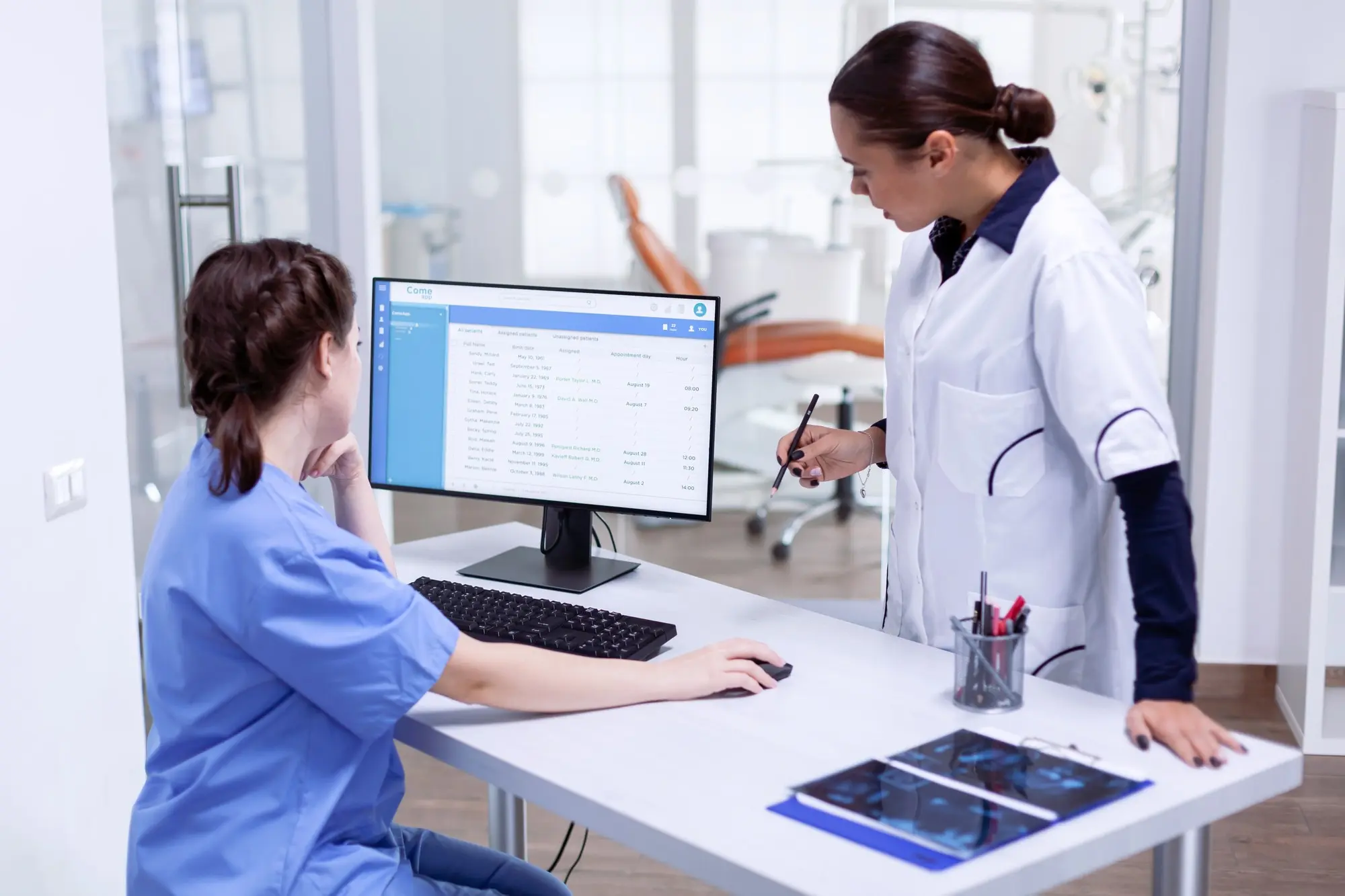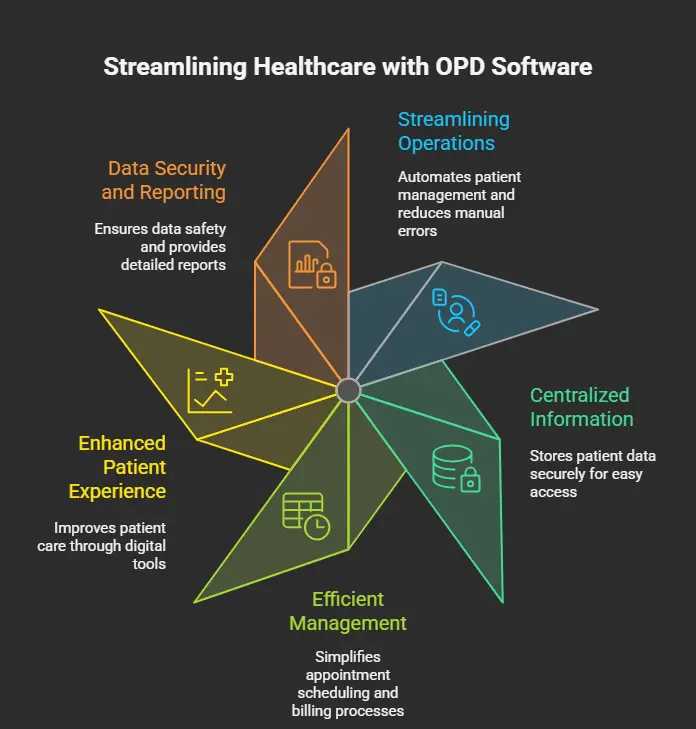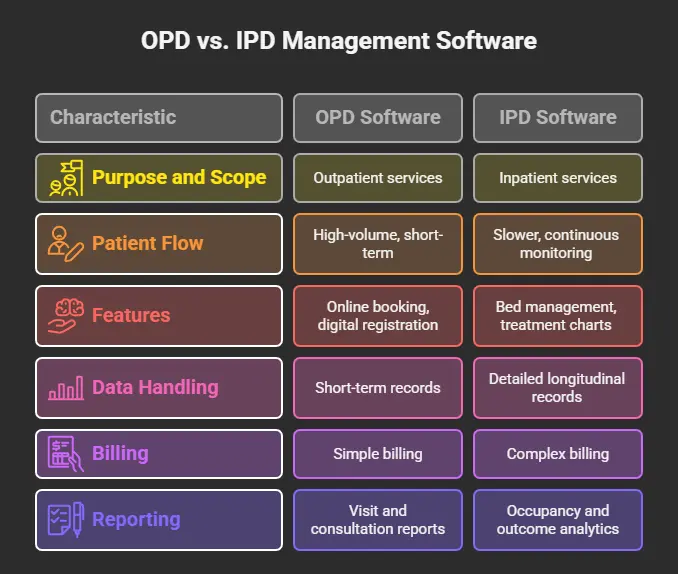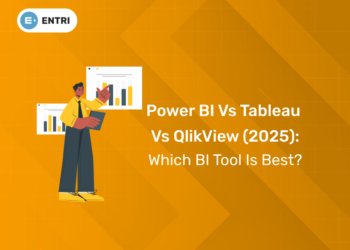Table of Contents
In this blog, we will cover everything you need to know about OPD (Outpatient Department) management software – a powerful digital solution that helps hospitals and clinics manage outpatient services efficiently. From understanding what OPD management software, to exploring its importance, key features, benefits and how it differs from inpatient department (IPD) systems, also this guide will give you a clear idea of how technology is changing out patient care. Whether you are a healthcare professional, hospital administrator or someone interested in healthcare technology, we will help you understand how OPD management software enhances hospital operations and improves the overall patient experience.
Explore Your Future in Hospital Administration! Enroll now!
Introduction
OPD (Outpatient Department) Management Software is a digital solution that simplifies and automates the daily operation of out patient department in hospitals and clinics. It helps healthcare professionals manage patient appointments, registrations, consultations, billing and medical records smoothly – all on one centralized platform. With the OPD management software, hospitals can easily track patient visits, maintain accurate electronic medical records (EMRs), and reduce the responsibility of manual paperwork. This ensures that doctors, nurses and administrative staff can coordinate successfully, leading to quick service and a better patient experience.
The system plays an important role in improving the opearational efficiency, reducing waiting times and ensuring that each patient receives systematic treatment on time. In today’s world where digital transformation is modifying the healthcare, implementation of OPD management system has become important for every clinics and hospitals that aim to provide reliable, precise and patient-friendly services.
What is OPD (Outpatient Department) Management Software?
1: What is the primary role of a hospital administrator?
OPD (Outpatient Department) Management Software is a specialized digital system designed to simplify and streamline various tasks in an outpatient clinic in a hospital or clinic. It helps healthcare professionals manage the entire outpatient journey – from patient registration and appointment scheduling to invoicing, consultations and report generation – in an efficient and paperless way.
1. Streamlining Outpatient Operations
In a busy hospital atmosphere, it could be challenging to manage the large numbers of daily visitors. OPD management software program automates this procedure via keeping digital records of patients, medical doctors and appointments. It removes the need of manual entries, ensures rapid and error-free registration, and helps staff manage patients needs correctly.
2. Centralized Patient Information
All patients detail – consisting of personal information, diagnoses, prescriptions and test report reviews – are securely saved in one place. This gives doctors and staff immediate access to correct records, and improves communication and coordination between the departments.
3. Efficient Appointment and Billing Management
This software will make easy to schedule, modify, or cancel appointments. It sends automatic reminders to patients, saving time for doctors and all other staff. Additionally, billing turns into more obvious and organized, because the system routinely calculates consultation fees, lab charges, and any other expenses.
4. Enhanced Patient Experience
OPD Management Software completely reduces waiting times and ensures smooth experiences for patients. With capabilities like online reserving appointments, digital prescriptions, and immediately access to test results, patients obtain faster and more reliable care.
5. Data Security and Reporting
The machine ensures that precise patient records is stored securely and is most effective to authorized peoples. It additionally generates detailed reports on patient visits, revenue and health practitioner overall performance, helping healthcenter administrators make informed decisions.
Hospital Administration Course with Assured Career Growth
Hospital Administration Course by Entri App: Master essential healthcare management skills, gain certification, and secure top roles in leading hospitals
Join Now!Importance of OPD Management in Healthcare
The Outpatient Department (OPD) is often the primary factor of contact between patients and healthcare employees. It performs an essential function in shaping the overall patient experience and keeping the recognition of the hospital. Effective OPD ensures that patients recieves timely treatments, organized and quality treatment without any delays or confusion.
1. Ensures Smooth Patient Flow
Proper OPD management helps hospitals to deal with large numbers of patients efficiently. From registration and appointment scheduling to consultation and billing, each step is streamlined to reduce waiting times and crowding. When patient go with properly-organized, health providers can consciousness more on analysis and solution in preference to administrative problems. This not only saves time but additionally enhances overall service quality.
2. Improves Coordination and Communication
In a healthcare facility, multiple departments which includes reception, diagnostics, pharmacy, and billing need to work together smoothly. The OPD management structures create a bridge among those departments through making sure that patients data were shared immediately. This gets rid of miscommunication, prevents duplication of works, and allows staff teams supply coordinated and error-free informations and care.
3. Enhances Patient Experience
An organized OPD without delay contributes to higher patient delight. When patients can without problems book appointments, get quick consultations, and receive their reports or prescriptions on time, it builds trust inside the healthcare enterprise. Modern OPD manipulate device additionally permit features like online appointmnets, digital bills, and electronic medical records (EMR), making the complete process more convenient for every patient.
4. Enables Accurate Record-Keeping and Reporting
Maintaining accurate record is important for continuity of care and medical analysis. The OPD management guarantees that every patient visits and treatments are properly documented. This information may be used for future reference, insurance claims, and producing analytical reports that help health administrators track performance, revenue, and patient trends successfully.
5. Optimizes Resource Utilization
With a systematic OPD management device, hospitals could make better use of their available resources – including staff, equipments and consultation rooms. Automated scheduling and virtual records reduce manual workload and administrative errors, supporting the organization run smoothly with minimum waste of effort and time.
6. Strengthens Healthcare Quality and Efficiency
Ultimately, effective OPD management improves the overall exceptional of healthcare delivery. This permits hospitals to serve more patients in less time while keeping accuracy and compassion in care. In a healthcare atmosphere where time and accuracy are important, a well-managed OPD ensures that both patients and doctors benefit from a streamlined, dependable and efficient system.
Key Features of OPD Management Software
OPD Management Software is designed to simplify and streamline outpatient services in hospitals and clinics. It comes with wide range of features that assist healthcare companies manipulate patients effectively, reduce administrative workload, and improve the overall patient needs and experiences. Here are some of the key features explained below:
1. Patient Registration and Appointment Scheduling
One of the important feature of OPD software is simple patient registration. It permits staffs to document patient records quickly and correctly, eliminating long queues on the reception. The appointment scheduling function enables hospitals to control doctors availability, book or reschedule appointments, and send automatic reminders to each patients, reducing any missed consultations.
2. The Electronic Medical Records (EMR) Management
OPD software maintains complete electronic medical records of each and every patient. This consists of personal information, medical history, previous consultation details, lab reports, and prescriptions. Doctors could get patient records easily, and ensures informed decision-making and continuity of care throughout every visits. EMR management also reduces paperwork and minimizes the risk of lost records.
3. Billing and Payment Integration
Billing is simplified with OPD software program, as it is able to calculate consultation fees automatically, diagnostic costs, and other expenses. Combined payment gateways allows patients to pay bills digitally, presenting convenience and clarity. The system can generate invoices and receipts quickly, improving the accuracy and saving administrative time.
4. Lab and Diagnostic Management
Many OPD systems consist of modules to manipulate lab tests and diagnostics. Doctors can request test results without any delay from the software, track result quickly, and link them to patient records. This integration guarantees faster reporting, reduces errors, and allows patients and doctors to access test results digitally.
5. Doctor and Staff Management
OPD software consists of features to control doctors’ schedules, consultations, and availability. Staff management modules assist allocate resources efficiently, monitor performance, and coordinate tasks between reception, nursing, and pharmacy teams. This guarantees easy operations and reduces furthur issues in patient care.
6. Reporting and Analytics
Advanced OPD structures offer targeted reviews on patient visits, revenue, doctors performance, and departmental performance. Analytics helps hospital administrators make right decisions, optimize resources, and identify areas for any development. These understandings are important for strategic planning and improving the high-quality of care.
7. Patient Communication Tools
Modern OPD software program regularly consists of automatic SMS or email notifications to remind patients approximately upcoming appointments, lab results, or follow-up visits. This feature improves patient engagement and enhances ovell satisfaction.
Benefits of OPD Management Software
Implementing OPD Management Software in hospitals and clinics gives several benefits that enhance both operational overall performance and patient care. By computerizing patient processes, hospital can reduce manual workload, enhance accuracy, and provide a continuing experience for patients.
1. Efficient Patient Handling
OPD software helps to manage lots of patients efficiently in good manner. From quick registration to appointment scheduling, the system guarantees that patient visits are properly-organized and streamlined. Automated procedures reduce waiting time, prevent overcrowding, and allow each staff to focus more on patient care in preference to administrative responsibilities.
2. Improved Data Accuracy
Manual document-keeping can make mistakes and misplaced informations. The OPD Management Software guarantees that patient details, consultation details, and treatment history are stored digitally and precisely. This reduces the chances of mistakes in medical records, billing, and prescriptions, that is important for keeping exceptional healthcare offerings.
3. Better Resource Management
Hospitals and clinics regularly face challenges in managing doctors’ schedules, consultation rooms, and diagnostic sources. The OPD software allocate resources correctly through tracking availability of doctor, patient appointments, and facility utilization. This leads to ideal utilization of staff and equipment, minimizing idle time and maximizing productiveness.
4. Enhanced Patient Experience
Patients benefit significantly from a simple and organized out patient system. Features consisting of online appointment booking, computerized reminders, and digital access to reports and prescriptions make visits moe smooth and effortless. A well-managed OPD will increase patient satisfaction and builds trust with the healthcare provider.
5. Faster Billing and Payments
OPD software automates billing and payment methods, making sure correct calculation of consultation fees, lab charges, and any other expenses. Digital payment options and immediate invoice generation make the financial process clear and uncomplicated for both patients and hospital staff.
6. Comprehensive Reporting and Analytics
The software offers certain awareness into patient developments, doctor performance, earnings, and departmental efficiency. Administrators can use these analytics to make data-driven decisions, improve offerings, and identify the areas needs attention. Also reports additionally help in security compliance and audit preparation.
7. Secure and Organized Record-Keeping
Patient data protection is an important concern in healthcare. The OPD Management Software stores all information securely with controlled access for legal personnel. Digital storage eliminates the risk of lost documents and ensures organized record-retaining for easy retrieval during any emergencies.
Hospital Administration Course with Assured Career Growth
Hospital Administration Course by Entri App: Master essential healthcare management skills, gain certification, and secure top roles in leading hospitals
Join Now!Difference Between OPD and IPD Management Software
In healthcare facilities, handling patient care efficiently requires specialized software systems for various types of services. OPD (Outpatient Department) Management Software and IPD (Inpatient Department) Management Software are two essential solutions, however they serve specific purposes and functions differently. Understanding their differences is very important for hospitals and clinics aiming to optimize their operations.
 1. Purpose and Scope
1. Purpose and Scope
- OPD Management Software is designed specially for out patient services. It makes a speciality of sufferers who visit the hospital for consultation, minor processes, or follow-ups and do not require staying. The software manages appointment scheduling, patient registration, doctor consultations, billing, and electronic medical data’s for those short-term visits.
- IPD Management Software, However, is intended for inpatients who’re admitted to the hospital for furthur treatments that requires observations over a period of time. It handles greater complex processes, which includes bed allocation, inpatient monitoring, treatment plans, surgical treatment scheduling, medication management, and discharge guidelines.
2. Patient Flow Management
- In OPD, the patient flow is usually significant but short-term. The OPD software focuses on quick registration, reducing waiting times, and managing multiple appointments smoothly.
- In IPD, patient flow is slower but requires continuous monitoring. IPD software tracks patients’ admitting in hospital over days or weeks, handles multiple departments (like ICU, general wards, and surgery units), and make sure the coordination for long-term care.
3. Features and Functionality
- OPD Management Software consists of features including online appointment booking, digital patient registration, scheduling consultation, billing, laboratory test requests, and prescription handling. It prioritizes quick access for both patients and staff.
- IPD Management Software incorporates more comprehensive functionalities, including bed management, nurse and doctor assignment tracking, surgery and procedure management, detailed treatment charts, medication administration, patient vitals monitoring, and discharge summaries. It is more detailed to support long-term care planning and critical care.
4. Data Handling and Records
- OPD software maintains short-term records that are primarily used for consultation history, diagnostic results, and prescriptions. The focus is on quick access and accuracy for follow-up visits.
- IPD software maintains detailed medical history record covering the entire hospital stay. These include treatment plans, surgical records, medical history, daily nursing notes, lab test results, and billing details for furthur extended services.
5. Billing and Financial Management
- OPD billing is relatively simple, covering consultation fees, lab tests, and minor procedures. Payments are often made immediately after the visit.
- IPD billing is more complex due to multiple services, room charges, surgery costs, and long-term treatments. IPD software supports itemized billing, insurance processing, and installment payments if necessary.
6. Reporting and Analytics
- OPD software generates reports related to patient visits, doctor consultations, revenue per day, and appointment trends.
- IPD software provides in-depth analytics including bed occupancy rates, treatment outcomes, departmental efficiency, resource utilization, and detailed patient care metrics.
Explore Your Future in Hospital Administration! Enroll now!
Conclusion
OPD Management Software facilitates hospitals and clinics manage each day outpatient activities more effectively. It makes duties like patient registration, appointment reserving, doctors consultations, billing, and report management quickly.
With this software, hospitals can save time, reduce mistakes, and provide better treatment service to patients without admitting. It also stores all patient records organized and without problems it is accessible for future visits. Generally, the OPD Management Software is an important tool for any healthcare center that desires to enhance patient care, streamline operations, and move toward digital healthcare management.
| Related Links | |
| What is Healthcare Technology? | What is Hospital Management Software? |
| Hospital Administration vs Operations Management | Hospital Operations Management: Definition and Career Paths |
Hospital Administration Course with Assured Career Growth
Hospital Administration Course by Entri App: Master essential healthcare management skills, gain certification, and secure top roles in leading hospitals
Join Now!Frequently Asked Questions
What is OPD Management Software?
OPD Management Software is a digital system designed to manage outpatient services in hospitals and clinics. It automates key processes such as patient registration, appointment scheduling, doctor consultations, billing, and report management. This helps healthcare providers save time, reduce paperwork, and deliver efficient patient care.
How does OPD Management Software help hospitals and clinics?
The software simplifies the management of large numbers of outpatient visits. It allows staff to book appointments quickly, track patient records digitally, generate bills automatically, and access medical histories instantly. This improves operational efficiency and ensures smooth coordination between doctors, patients, and administrative staff.
What are the key features of OPD Management Software?
Key features include patient registration, appointment scheduling, electronic medical records (EMR), billing and payment processing, prescription and report management, and automated notifications. Some advanced systems also integrate with lab and pharmacy modules for seamless data sharing across departments.
Is OPD Management Software suitable for small clinics?
Yes, OPD Management Software is ideal for both small clinics and large hospitals. For small clinics, it helps manage appointments and patient details efficiently, while for large healthcare centers, it supports multi-department coordination and advanced reporting. Many software providers offer scalable versions suitable for different facility sizes.
How is OPD Management Software different from IPD Management Software?
OPD (Outpatient Department) software focuses on patients who visit for consultations or minor treatments without being admitted. In contrast, IPD (Inpatient Department) software manages admitted patients and includes features for bed allocation, treatment plans, surgery tracking, and discharge management.
Can OPD Management Software integrate with other hospital systems?
Yes, most modern OPD systems can integrate with laboratory, pharmacy, radiology, and accounting modules. This ensures seamless information flow between departments, reduces duplication, and enhances the accuracy of patient data.
What are the benefits of using OPD Management Software for patients?
For patients, the software provides faster registration, shorter waiting times, easy appointment booking, and accurate billing. They can also receive timely updates about appointments or reports via SMS or email, improving the overall patient experience.
How secure is patient data in OPD Management Software?
Data security is a top priority. Most OPD Management Software solutions use data encryption, role-based access control, and regular backups to protect sensitive medical information. Healthcare facilities must also comply with data protection regulations to ensure complete confidentiality of patient records.


